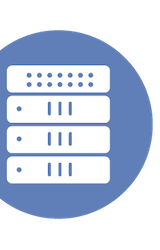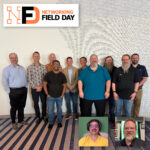|
|
This video is part of the appearance, “Networking Field Day 38 Delegate Roundtable Discussion“. It was recorded as part of Networking Field Day 38 at 11:00-12:00 on July 9, 2025.
Watch on YouTube
Watch on Vimeo
In a roundtable discussion, the delegates at Networking Field Day 38, led by Tom Hollingsworth, explored the evolving role of networking within organizations, moving beyond the traditional “boring is good” approach. The key question revolves around whether the network should remain a commoditized utility, managed by external providers, or become a central, differentiating product of the business. The discussion highlights that while user experience has greatly improved to the point where networks are expected to “just work,” the focus is now shifting towards enhancing the operator experience, primarily through automation. This automation presents a paradox for some, who fear job displacement, while others argue it elevates the value of the networking role by requiring more strategic, software-driven approaches and addressing chronic issues like poor documentation. The key decision for businesses, therefore, isn’t whether to automate, but rather the extent to which their network serves as a differentiator, influencing whether they build in-house automation capabilities or outsource to specialists.
The conversation further looked into the notion of the network as a fundamental utility, akin to electricity or water, but with the unique challenge of constantly escalating bandwidth and latency demands, unlike other static utilities. This constant evolution necessitates a shift in operational paradigms. While many smaller organizations, like law or dental offices, may benefit from “network as a service” models due to their stable growth and commoditized needs, larger enterprises with dynamic requirements, such as those leveraging AI clusters, face a more complex decision. The “middle path,” where organizations try to straddle both approaches, is presented as an illusion of choice, potentially leading to inefficient investments and an inability to adapt to rapidly changing technological landscapes.
Ultimately, the consensus among the delegates is that businesses must consciously choose one of two distinct paths: either treat the network as a utility to be outsourced for efficiency and convenience or elevate it to a core, strategic asset requiring internal investment in specialized skills and automation. This decision is further complicated by a growing skills gap, where newer professionals prefer API-driven interfaces over traditional command-line interfaces. The increasing complexity and demands on modern networks necessitate a multidisciplinary team approach, moving away from the “unicorn” network engineer. The overarching message is that understanding an organization’s specific needs and making a deliberate choice about the network’s role is paramount to avoiding becoming stagnant in the rapidly advancing technological environment.
Personnel: Tom Hollingsworth









